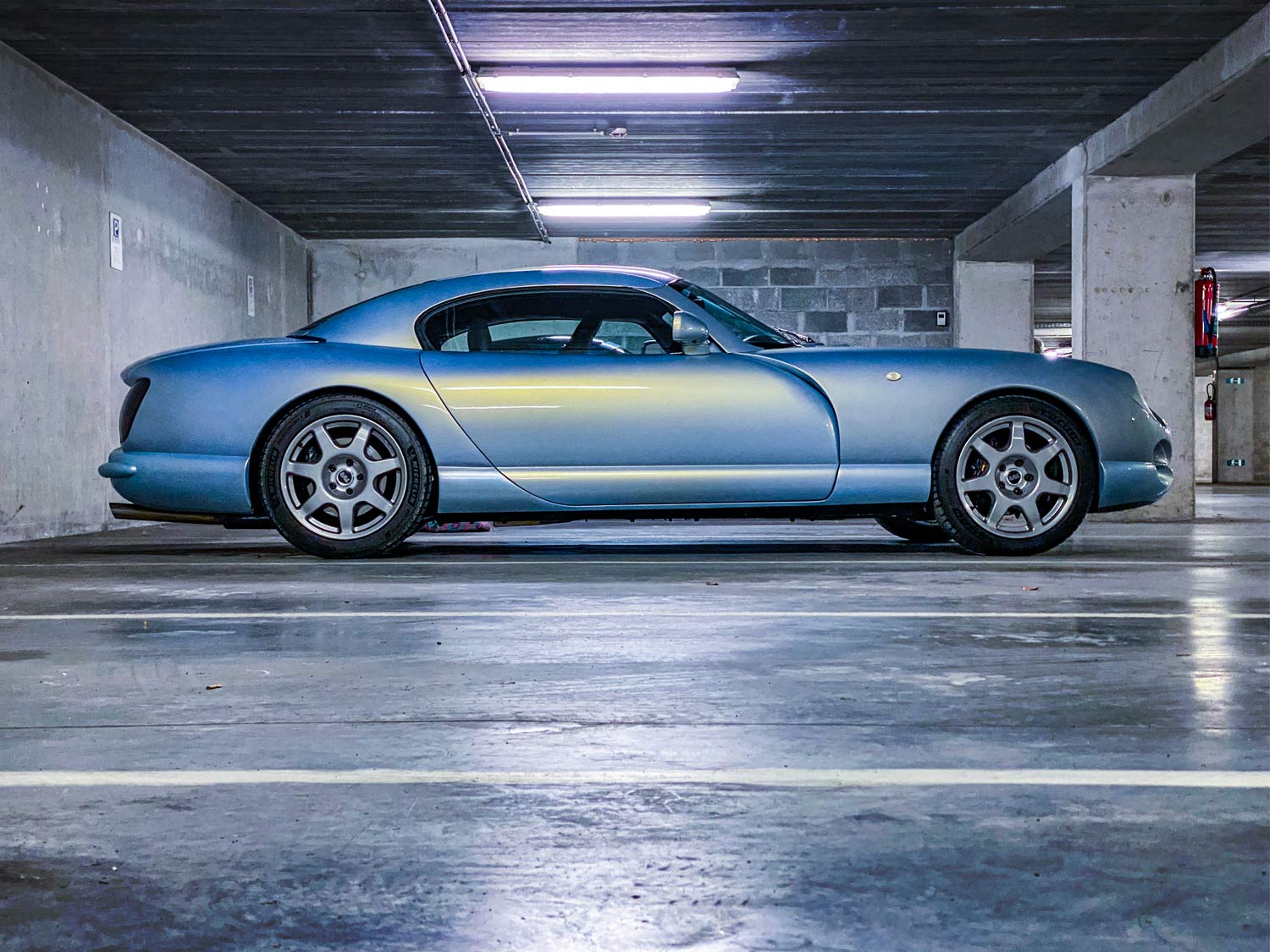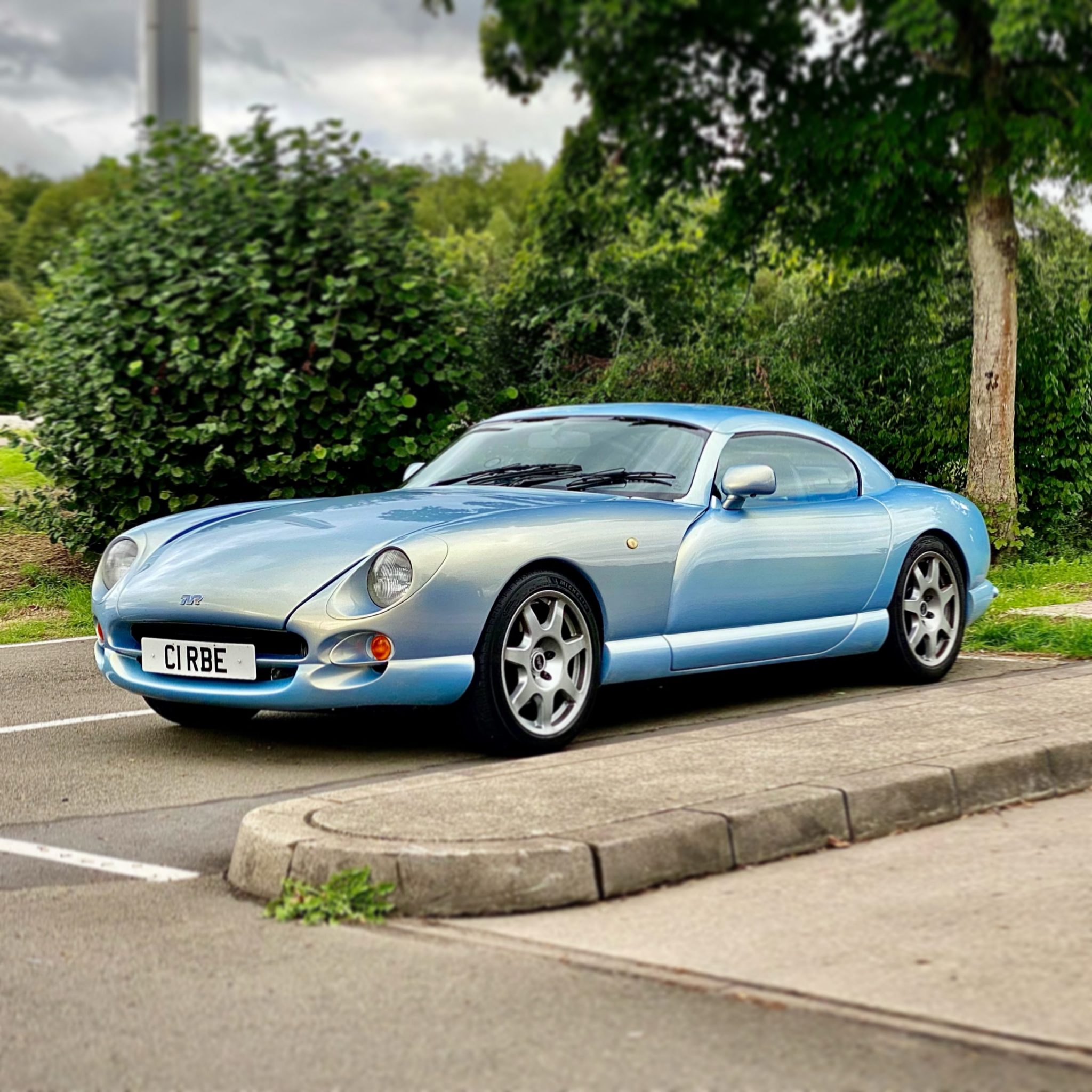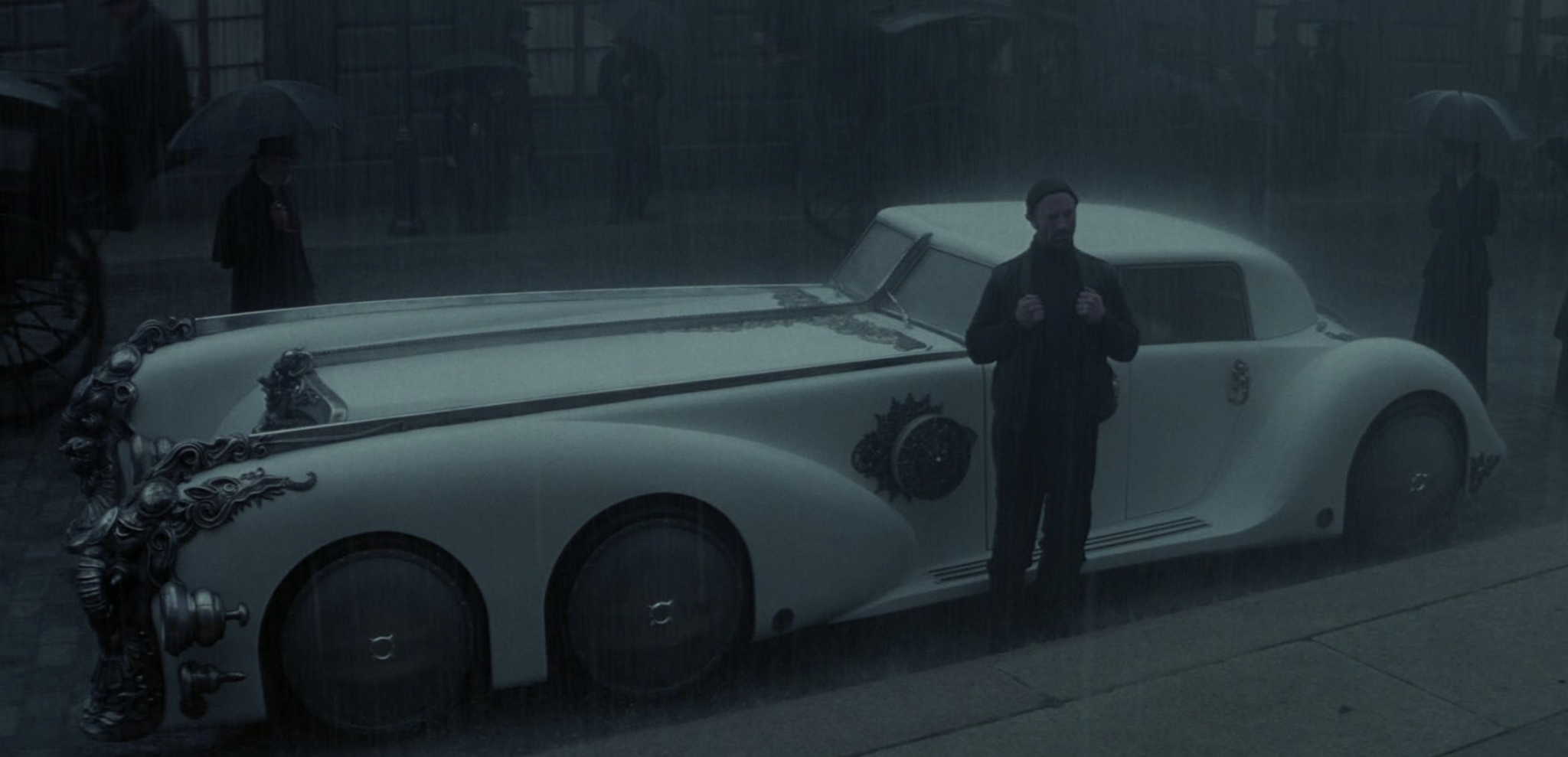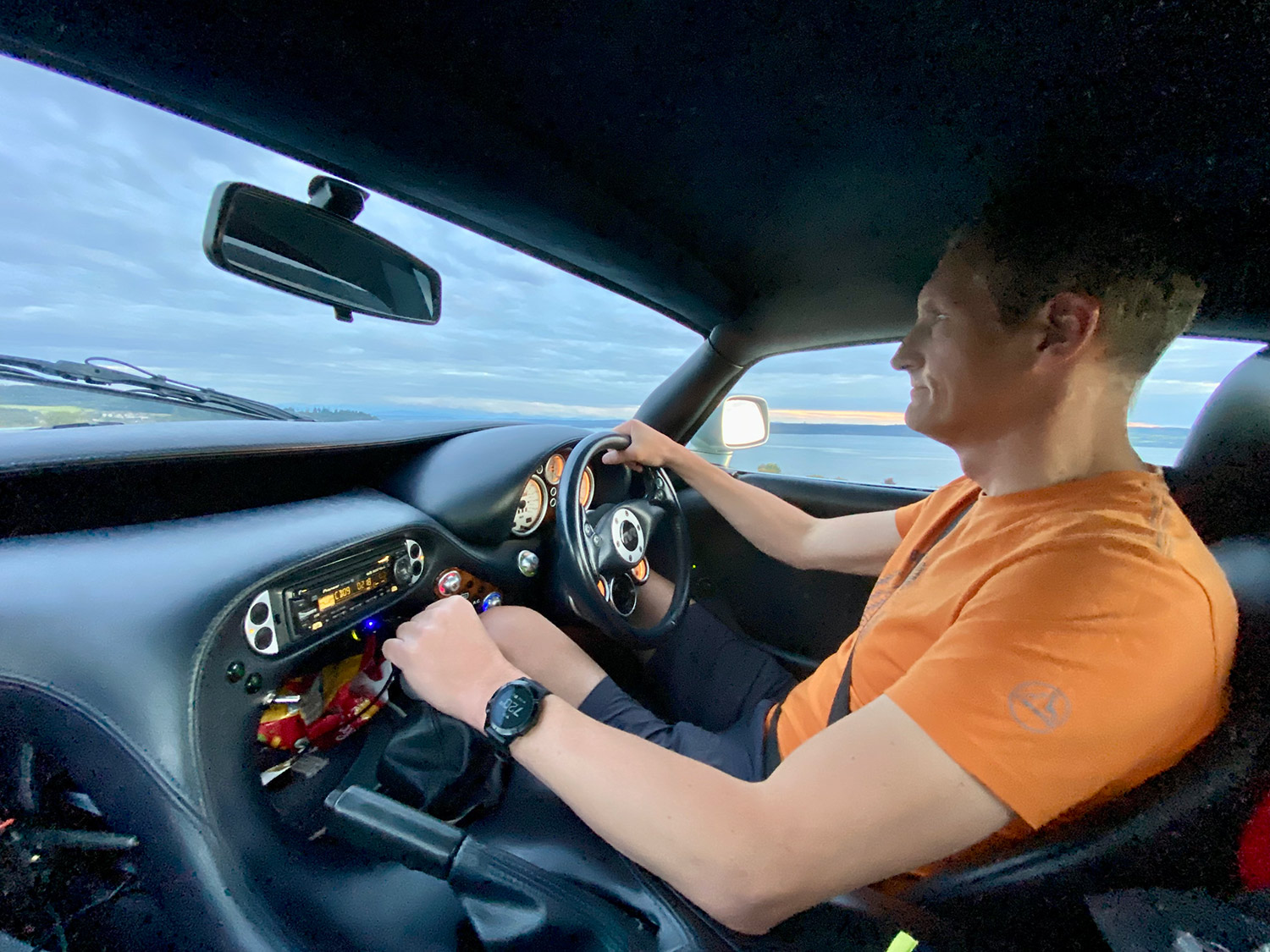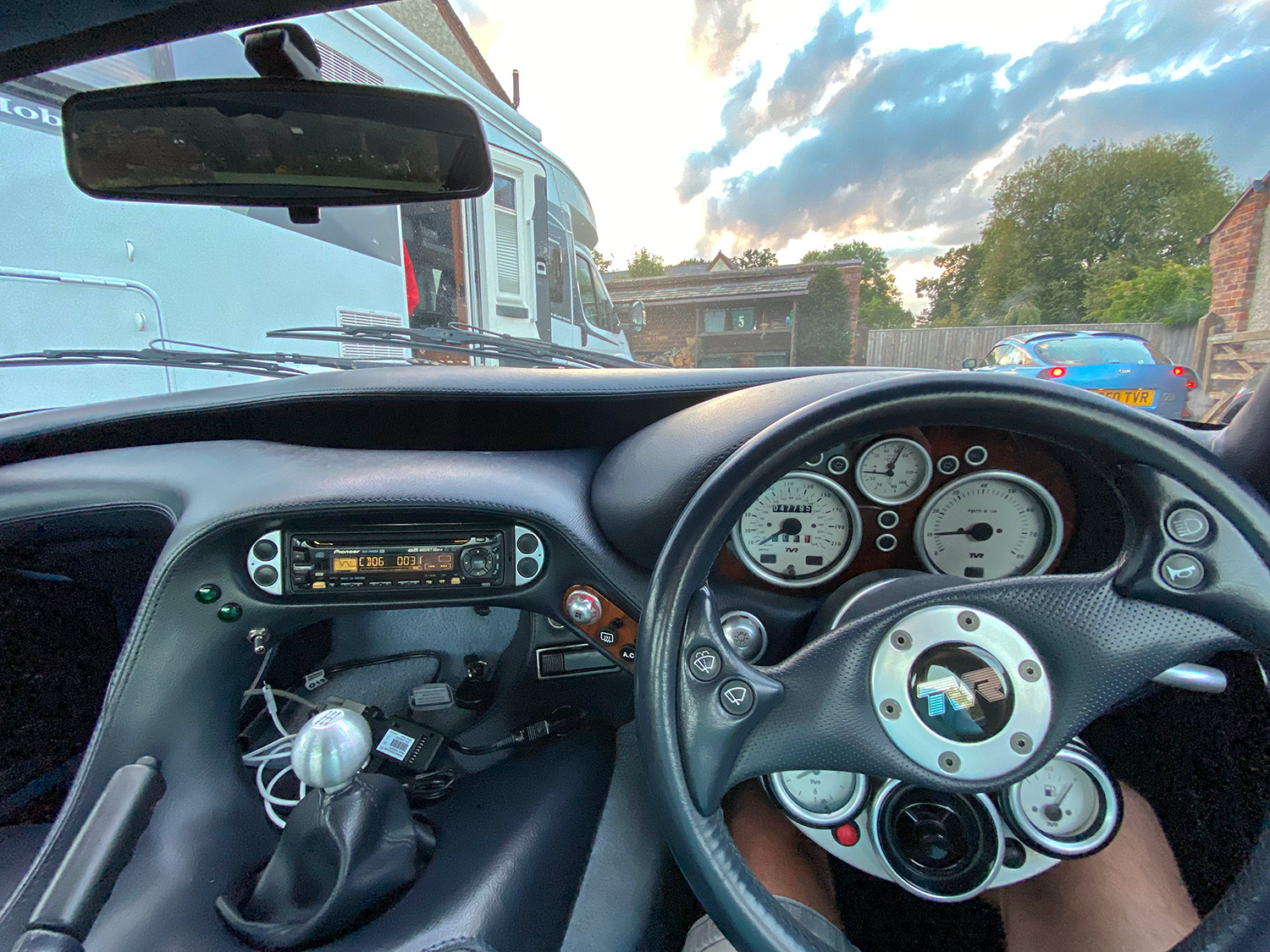The TVR Cerbera
The first TVR Cerbera I remember seeing is in a car park in Chester. It was the Chester racecourse car park and it had parked to the Audi A3 I had at the time.
The thing that struck me the most about the TVR Cerbera was its sheer size. The bonnet just seemed to go on forever, and it screamed decadence. What it actually reminded me of was the incredible, over-the-top car in the film The League of Extraordinary Gentlemen starring Sean Connery.
I’ve borrowed a photo from IMDB to save you from having to look up the obscure film reference. But if you’d said TVR was involved in the design I’d quite believe you.
The TVR Cerbera Length
Above is Captain Nemo’s six-wheeled Nautilus car from Sean Connery’s adventure movie The League of Extraordinary Gentlemen. Its actually 6.6m in length and started life as a Land Rover.
Anyway, the TVR Cerbera is only 4.2m long, which is shorter than the Audi A4 at 4.7m. The difference of course is all about proportions.
And in the TVR Cerbera’s case, the proportions of the bonnet compared to the rest of the car are quite impressive. This does make going over the edge of something simple very difficult as you literally can’t see anything. An everyday example: going into an underground car park. But what the bonnet does do is make the TVR Cerbera look priceless and quite unlike anything else you’ll see on the road.
Four Man Car
While the TVR Cerbera suggests you can fit four people in, frankly we had fun trying to get bags in the back, let alone people. Maybe two grown men in the front and two petite people in the back.
This lack of space is compounded by the way the doors operate.
Let me explain, I’m not talking about the sheer lack of door handles (which just adds to the sleek mystery). It’s actually because the doors are so long. They also don’t open very wide which makes getting in and out quite hard.
We experienced this first hand when trying to use a normal car park. If you park next to anything bigger than a Fiat 500 the passenger has to get out first so the driver can manoeuvre the car to allow space for them to get out.
In TVR’s defence though, making the Cerbera a four-door car just wouldn’t have worked at all aesthetically. I was also told that one of the reasons why the Cerbera (like all TVRs) has the curved gill shape, is to give a greater tolerance when hanging the doors a few mills out. Good to know.
What you can’t see from the above photo is the sheer height of the area separating the passenger and driver. As the car is so low the gearbox and relevant drive shaft essentially lives in the car. Getting in and out of the driver’s side without using the door is hilarious as there’s not a lot of room.
Cerbera Cockpit
The cockpit in the Cerbera is pretty comfortable. It’s got plenty of legroom and the steering wheel feels solid and in the right place. As with all TVR’s, there’s literally no thought gone into user experience. For a start, half the things you need aren’t where you’d expect to find them or you can’t see them.
The emergency lights are hidden on the end of the indicator stick, so looking for the familiar red triangle gets you nowhere. The indicators themselves aren’t self-cancelling, nor do they turn off by moving them in the opposite direction (like all modern indicators). You have to click them in the same direction you’ve put them on, to turn them off. This means all new Cerbera drivers leave roundabouts and junctions looking like they’ve never used an indicator before.
The other interesting features are the horn is on the steering wheel as a button, but it’s next to the main beam. Also on a button. So we were all accidentally hooting the horn at first when trying to use the main beam.
The biggest problem we encountered was switching the lights on. Rather than put the air conditioning in an out-of-sight place, TVR decided to put the main headlights out of sight, hidden behind the steering wheel.
Starting the TVR Cerbera
The coolest thing about the TVR Cerbera though has to be the noise it makes. It’s also way advanced of its time having a keyless start.
You press the black button on the steering wheel (after switching off the immobiliser) and the engine roars into life. The TVR Cerbera has a 4.2 litre v8.
This particular TVR Cerbera has also been mapped, so when you take your foot off the accelerator at about 3,000 revs it pops and grumbles and makes one hell of a noise in tunnels, which was a lot of fun (given the number of tunnels we went through).
To stop the engine, there’s another button (for some reason). This one is red. The design didn’t take into account people accidentally pressing the black one when the engine is still running, and consequently, it’ll try and use the starter motor on an already running engine – makes sense.
Parking the TVR Cerbera
I’ve been lucky enough to have park distance for the last however many years, meaning as long as I’m slow and looking out it’s unlikely I’m going to hit anything. The TVR Cerbera has no such luxury. We all agreed that for any parking it was best if the passenger got out and directed the driver into the space. This wasn’t only sensible, as I’ve mentioned about the doors it was usually necessary.
The parking brake I found wasn’t very effective on hills, you needed to be ready to take the car on the bite at any time. This was made harder by the elevated status of the handbrake which puts the should at an awkward angle when you try and engage it. I can’t imagine anyone who’s shorter than me having any fun at all doing this.
The other peculiarity about the TVR Cerbera is, unlike more modern cars it has no synchro going into reverse. This means you have to put it in fifth first. It all sounds fine when you’re sat, browsing the internet at home right? But try parking a TVR Cerbera with a small crowd of onlookers into a small space, then remember that you’ve (naturally) got to put it into fifth first.
The lack of sixth gear was also noted on a regular basis so we didn’t accidentally put it into reverse while zooming along the autobahn.
Reactions to the TVR Cerbera
For all the niggles and things which just don’t quite add up, one of the best things about the car is their reactions. Other drivers double-take, kids press their noses up against the glass in their parent’s bland SUV or give thumbs up, and other exotic car drivers give a deft nod as you sail past all drama and screaming exhaust.
One of my fondest memories of the TVR Cerbera is when we were approaching a typically terrible European sliproad onto a motorway. The ones where the entrance to the motorway and exit are on the same bit of 100m causing utter confusion as people try and get on and off in the same space while dealing with other users going at breakneck speeds.
At one such junction, we had to get onto the motorway as quickly as possible as there was a truck hurtling toward us. J dropped the TVR Cerbera into second, hit the power sweet spot, and launched us onto the Autobahn.
I was pushed into the back of my seat like an F-18 pilot leaving a carrier as the engine screamed in utter delight at being fully opened up.
God knows what the truck driver must have thought. One minute he’s powering along, next minute the funny British Sportscar leaps from a near standstill in the feeder lane in front of him going Warp 9.
Choice Between T350 and Cerbera
Given the choice between the T350 and the Cerbera, I’d initially said I liked the T350. But after spending a week with them both going across Europe on a variety of different roads, I’d pick the TVR Cerbera anytime.
It’s a GT through and through, and I love the endless power, comfort and noise it rolled into one car; like a nuclear weapon with a sofa strapped to the top.
TVR Cerbera Background
The TVR Cerbera is a sports car that was produced by the British automaker TVR from 1997 to 2003. This sleek and stylish vehicle is known for its impressive performance, aggressive design, and unique character. In this article, we will take a closer look at the TVR Cerbera and explore what makes this car so special.
First and foremost, the TVR Cerbera is powered by a powerful engine. The base model was equipped with a 4.2-litre V8 engine that produced 400 horsepower, but there were also higher-performance versions that offered even more power. This engine was coupled with a rear-wheel drive system that provided incredible traction and handling, making the TVR Cerbera an incredibly fun car to drive.
In terms of design, the TVR Cerbera is a true work of art. The car features a low, wide stance and a bold, aggressive body that is both aerodynamic and functional. The exterior is accented by distinctive lines and curves, as well as large air vents that help to cool the engine and brakes. The interior of the TVR Cerbera is just as impressive, with high-quality materials, comfortable seating, and a well-appointed dashboard.
One of the standout features of the TVR Cerbera is its handling and performance. This car is incredibly nimble and responsive, with precise steering and a tight suspension that allows for excellent road feedback. The TVR Cerbera is also incredibly fast, with the ability to reach 60 miles per hour in just 4.5 seconds. This makes it an ideal car for both track days and high-speed driving on the open road.
In conclusion, the TVR Cerbera is a truly special car that is beloved by sports car enthusiasts all over the world. With its powerful engine, sleek design, and excellent handling, this car is a true masterpiece that is sure to be remembered for many years to come. Whether you’re a collector, a car enthusiast, or just someone who appreciates a well-made sports car, the TVR Cerbera is definitely a car worth checking out.
Follow TVR Tour on Social
Questions About the TVR Roadtrip?
If you’ve got any questions about the incredible TVR Tour Roadtrip I’ve been through here, please get in touch using the form below. You can also follow us on Social Media above for up-to-date photos, and check out the FAQ section.

